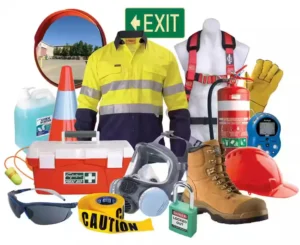Introduction
In industrial environments where hands are constantly exposed to hazards such as sharp tools,
chemicals, extreme temperatures, and heavy machinery, the need for protective hand gear
becomes crucial. However, beyond protection, workers also require dexterity, grip, and precision
to perform their tasks efficiently. This is where safety gloves play a vital dual role, not only
shielding hands from injury but also enhancing performance by improving control and handling
in demanding conditions.
Let’s explore how the right pair of gloves can improve grip, reduce fatigue, and help maintain
accuracy in a variety of industrial applications.
Grip: The Foundation of Industrial Efficiency
In settings like automotive manufacturing, construction, warehousing, and assembly lines, grip
is everything. Workers are often required to handle small components, operate tools, or
maneuver heavy objects. A weak or unreliable grip can lead to mishandling, accidents, or
reduced productivity. That’s why gloves designed with grip-enhancing materials and coatings
are essential.
Many industrial gloves feature textured palms or fingers coated with nitrile, latex, or
polyurethane. These coatings increase friction between the glove surface and the object being
handled, allowing for a secure hold even in wet, oily, or greasy conditions. This is especially
important when working with power tools or fragile materials where a firm grip ensures both
safety and precision.
Additionally, gloves with anti-slip properties reduce the risk of strain and repetitive motion
injuries by minimizing the amount of force workers need to exert. This not only improves comfort
during long shifts but also leads to fewer mistakes and higher efficiency.
Precision: The Hidden Strength of the Right Gloves
While grip ensures that workers can hold onto tools and materials, precision is what allows them
to use those tools effectively. In industries such as electronics assembly, metal fabrication, or
laboratory work, where small errors can result in significant consequences, precision becomes
just as critical as protection.
The best safety gloves for precision work are made from thin yet durable materials that allow
workers to maintain tactile sensitivity. This means they can feel what they’re touching without
compromising on protection. Gloves with ergonomic designs and pre-curved fingers offer a snug
fit, promoting natural hand movement and reducing hand fatigue.
For example, a worker in a manufacturing facility assembling electrical components needs to
handle tiny screws and delicate wires. Gloves that are too bulky can reduce touch sensitivity
and slow down work. However, gloves specifically designed for precision work allow for smooth,
controlled movements while still providing necessary protection against cuts and abrasions.
In addition to design, the flexibility of the glove material plays a big role. Lightweight fabrics with
good stretch ensure the glove conforms to the hand’s movements, offering better coordination
and reducing the chance of errors. Breathable materials also keep the hands dry and
comfortable, which is especially important during long hours of use.
Conclusion
Safety in industrial environments is a balance between protection and functionality. While gloves
are primarily used to protect against hazards, their role in enhancing grip and precision is
equally important. The right safety gloves enable workers to handle tools, parts, and materials
with confidence, accuracy, and ease, ultimately improving productivity and reducing workplace
injuries.
Investing in quality gloves that offer both safety and performance is not just beneficial, it’s
essential. For businesses looking to provide their workforce with reliable, high-performance
hand protection, SA Components is a trusted supplier offering a wide range of industrial gloves
tailored to meet the demands of different work environments.
In the end, gloves that protect while also enhancing performance don’t just prevent accidents,
they empower workers to do their best work safely and efficiently.



